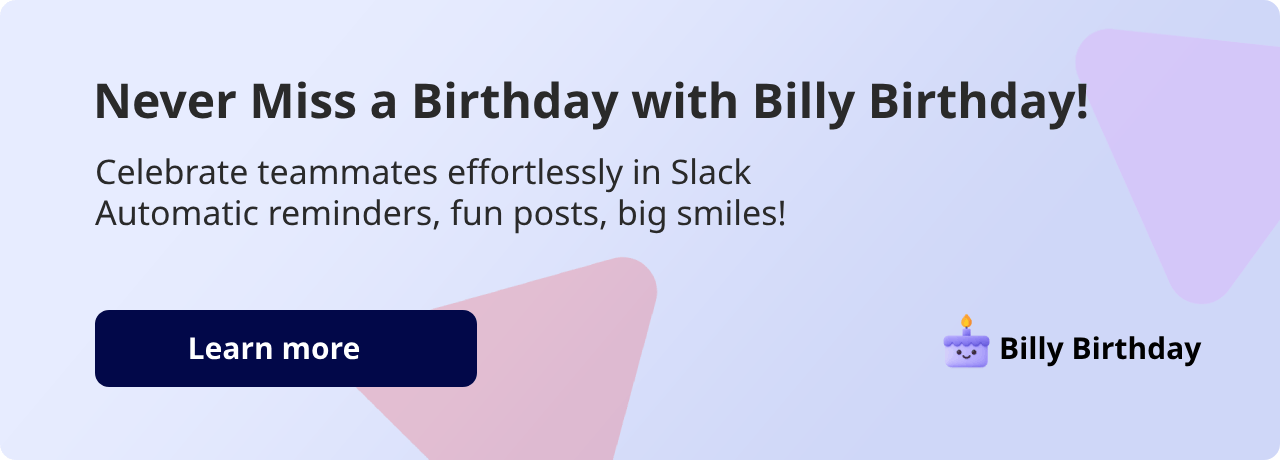Slack best practices for remote teams
Slack is often the backbone of your company. Wether you're remote or in-office. For remote companies, Slack become a center piece of everyone's work. This is the first thing you open in the morning and most probably the last thing you close in the evening.

For many teams, Slack is as important as email or meetings; it’s the place you check first in the morning and the last window you close at night. From direct messages that speed up daily communication to private channels for sensitive discussions, it gives remote team members the structure of a traditional office without the walls.
On top of that, third-party apps for scheduling, sharing files, or handling project management make it the single app your business can’t live without. Whether you’re coordinating Slack messages, tracking deadlines, or running meetings, Slack can be a key part of how your distributed team stays productive.

That’s why we’ve put together this ultimate guide of best practices, so you can use Slack more effectively, reduce distractions, and keep your company culture thriving, no matter where your people are working from.
Table of Contents
Quick answer:
Slack best practices for remote teams include organizing clear channels, setting statuses with integrations like Google Calendar, and using apps like Clappy Kudos, Billy Birthday, and Alfy Matching to strengthen communication, recognition, and culture. These steps help distributed teams stay productive, connected, and engaged.
6 Slack best practices for remote teams
Organise channels to create a digital office in Slack
One channel per team member or department. Use Slack channels with easy-to-understand guidelines to keep focused discussions grouped by specific projects rather than mixing everything together.
Set statuses for lunch hours and meetings
If you're using Google Calendar, you can install the Google Calendar integration to make sure your status is automatically updated when you're in a meeting. It also sends a notification one minute before meetings, which is convenient. This small automation improves communication across a distributed team and avoids confusion about things like working hours in different time zones.

Make sure employees configure the notification schedule
This will ensure that nobody gets bothered by notifications even if your team is spread across different time zones. Encouraging everyone to set expectations for when they can receive notifications helps with work-life balance and makes deep work time more meaningful.

Create a Kudos channel
Having a Kudos channel is one of the best ways to encourage team members to casually recognize each other. This kind of ongoing recognition boosts team engagement and directly supports the team’s productivity. The challenge is that Kudos channels often lose steam over time, but Clappy prevents that by keeping the channel active and lively in the long run.
Install a Birthday app that posts birthday and work anniversary celebrations
A simple bot like Billy the Birthday Bot works like a charm to make sure nobody is forgotten. It brings more fun into the workspace and is especially welcome when working remotely. Celebrating milestones is also a fun way for the entire team to stay connected and improve well-being, even without a physical office.

Set up a random coffee app
Make sure people actually meet and get to know each other. It's central to a company's culture, and apps like Alfy make it easy to connect employees for a virtual chat. These casual meetings simulate the traditional office “water cooler,” and can work wonders for remote collaboration and team building.

Final thoughts
When correctly set up, using Slack effectively with the right app and integrations becomes a strong partner in your company's success.
Knowing it's a central app for remote work, it's worth investing time and money to make it as efficient and welcoming as possible. Adopting clear ground rules, workflow automations, and a simple Slack etiquette guide ensures that new employees and new hires adapt quickly, work effectively, and contribute to the workflow builder setup that keeps everything moving forward.
FAQ
How can remote workers use Slack more effectively?
Remote workers benefit from clear communication practices. Using separate channels for projects, sharing important messages in relevant channels, and keeping updates to short messages helps all teams stay aligned without overload.
What are the best Slack integrations for productivity?
Popular Slack integrations include Google Drive for quick access to the latest files, Google Meet for instant video conferencing, and project management tools like Asana or Trello. These integrations make it easier to share tips, organize tasks, and keep everything connected in one Slack app.
How should I name Slack channels?
Good naming conventions make channels easier to navigate. Many teams use channel prefixes like proj- for specific projects or team- for departments. This ensures people can quickly find relevant channels without confusion.
What’s the best way to handle scheduled meetings in Slack?
You can connect Google Calendar or Outlook so that a scheduled meeting automatically updates your Slack status. This prevents missed pings and helps coworkers know when you’re busy. Direct mentions can be muted during meetings so you don’t lose focus.
When should I archive or leave a Slack channel?
Leaving Slack channels that no longer serve a purpose keeps your workspace clean. For example, once a project is finished, archiving the channel ensures important messages remain searchable while reducing noise for everyone.




